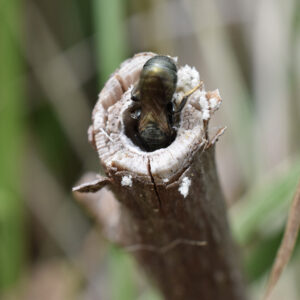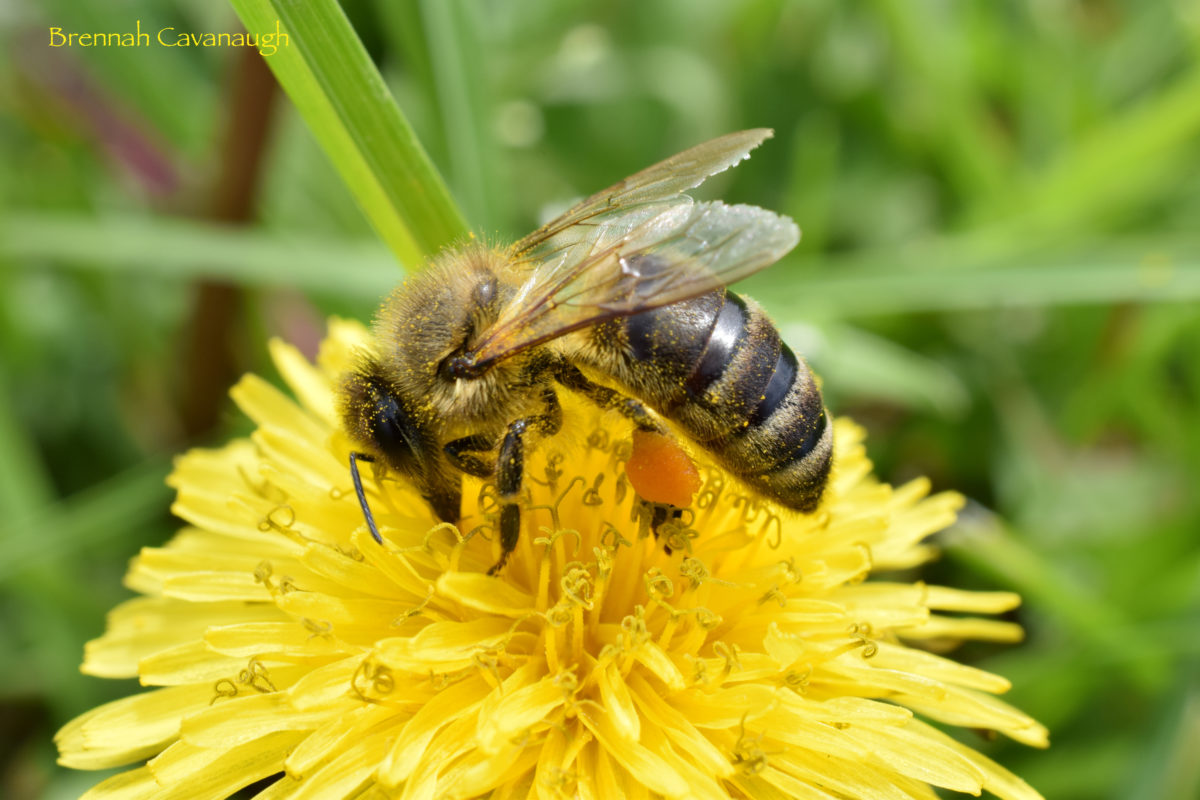I started keeping honey bees in 2012 which sparked my interest in insects generally and bees in particular. Through that interest came a love of photography. There are thousands, if not tens of thousands of different kinds of bees in almost any locale, most of which go unnoticed by the majority of humans. I learned from keeping bees that creatures need not be large to be extremely complex and interesting. My photography grew to encompass much more than just taking pictures of bees and other insects.
I have been interested in animals and plants and ecosystems for pretty much my whole life. Being a backyard naturalist is now a way I find the subjects for my photography and being autistic probably always has been a way for me to find subjects as well.
In many cases I’m able to find the subjects of my photos because I know where to look because I’ve researched and learned about them. For example with the photos below I knew of the bee from seeing them around and I had researched them and learned that they nest in hollowed twigs, which they chew the pith out of to make a hollow to lay their eggs. I didn’t actually find their nests until I knew what I was looking for and then I started seeing them everywhere. Then it was just a matter of getting a good photo.


It is harder to say how exactly being autistic affects my photography because it probably affects more than I really realize or understand, and it probably just generally affects how I see things and what catches my attention… but I’m fairly certain it also specifically has something to do with my tendency to notice almost everything. I’m definitely tuned in to spotting patterns and movements; so for example, often I can spot an unfamiliar flying insect simply by it’s flight pattern seeming ‘off’ somehow. I also do the same thing with other senses. For example this spring I was in the woods and I heard a small but widespread pattering noise under the leaf litter and I was able to listen to the sound, isolate one particular source nearby, and pinpoint exactly where under the leaves it was and wait for it to emerge. It turned out to be a very pretty striped wolf spider.
It may be very helpful for my photography but now that I’m thinking about it, it’s probably also the reason I can’t sleep at night without a fairly loud white noise to drown out small noises that I can’t simply ignore. (No matter how much I want to.)
If my photography and observations of the natural world inspire you to see the world a little differently, then I will have accomplished what my bees did for me when I first brought them home.


